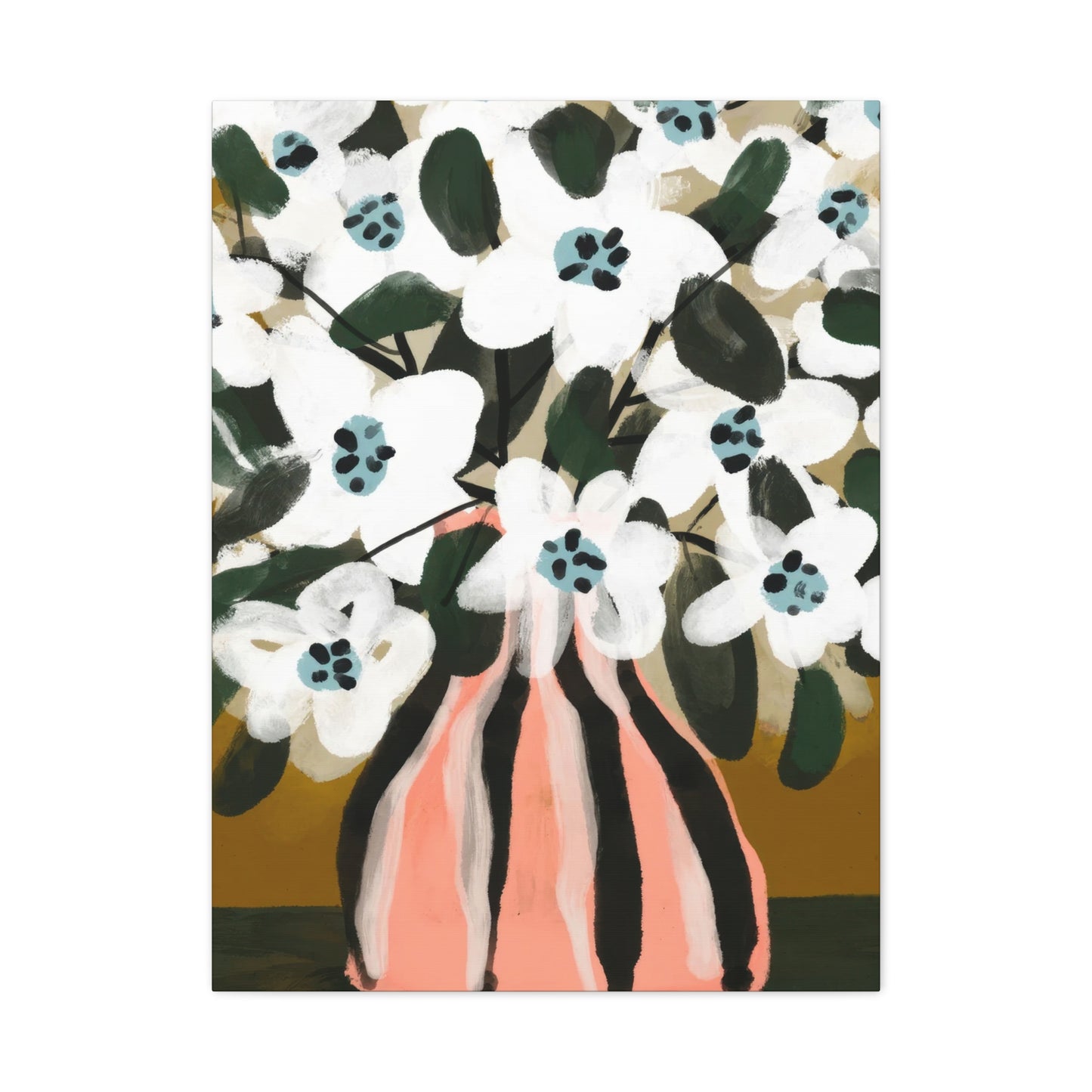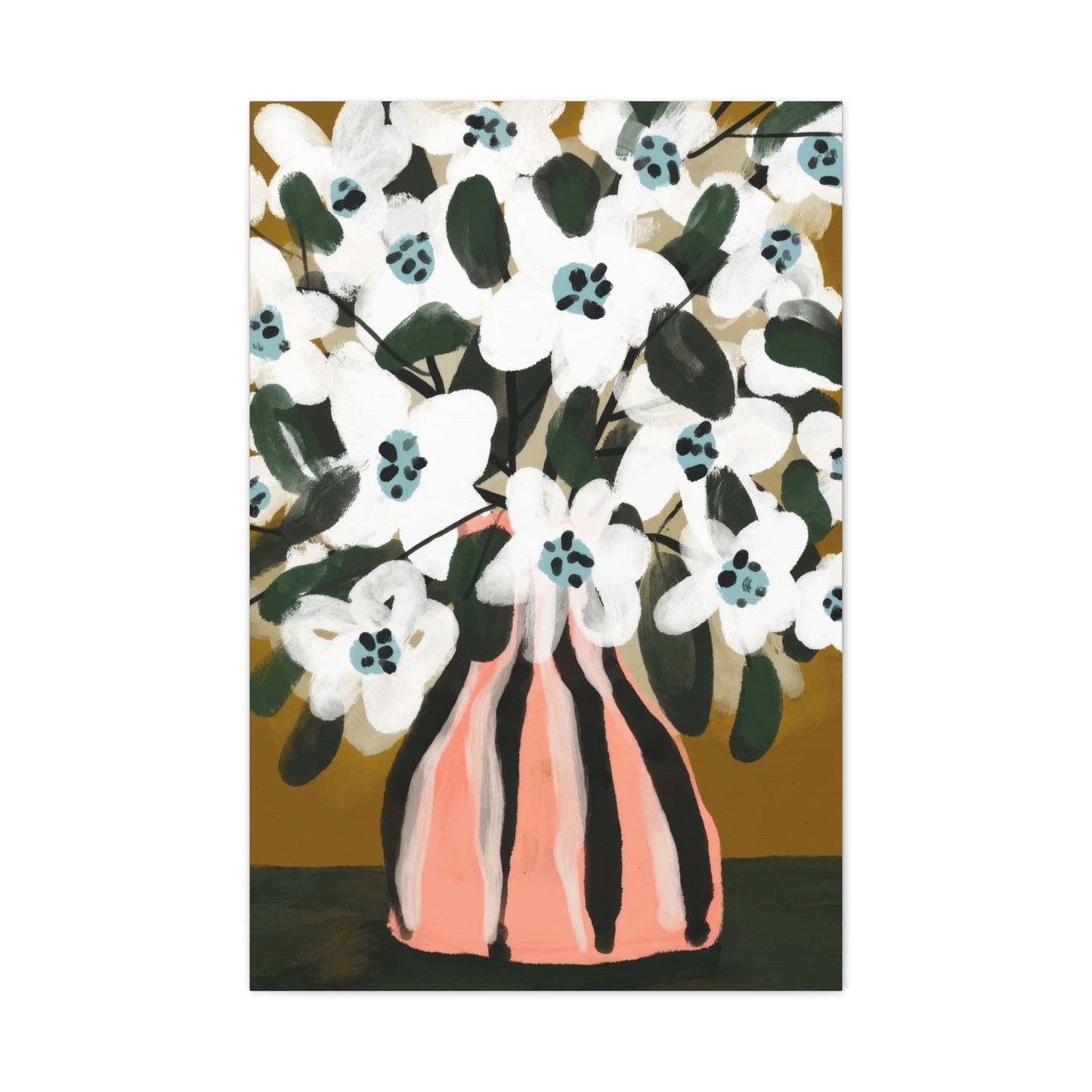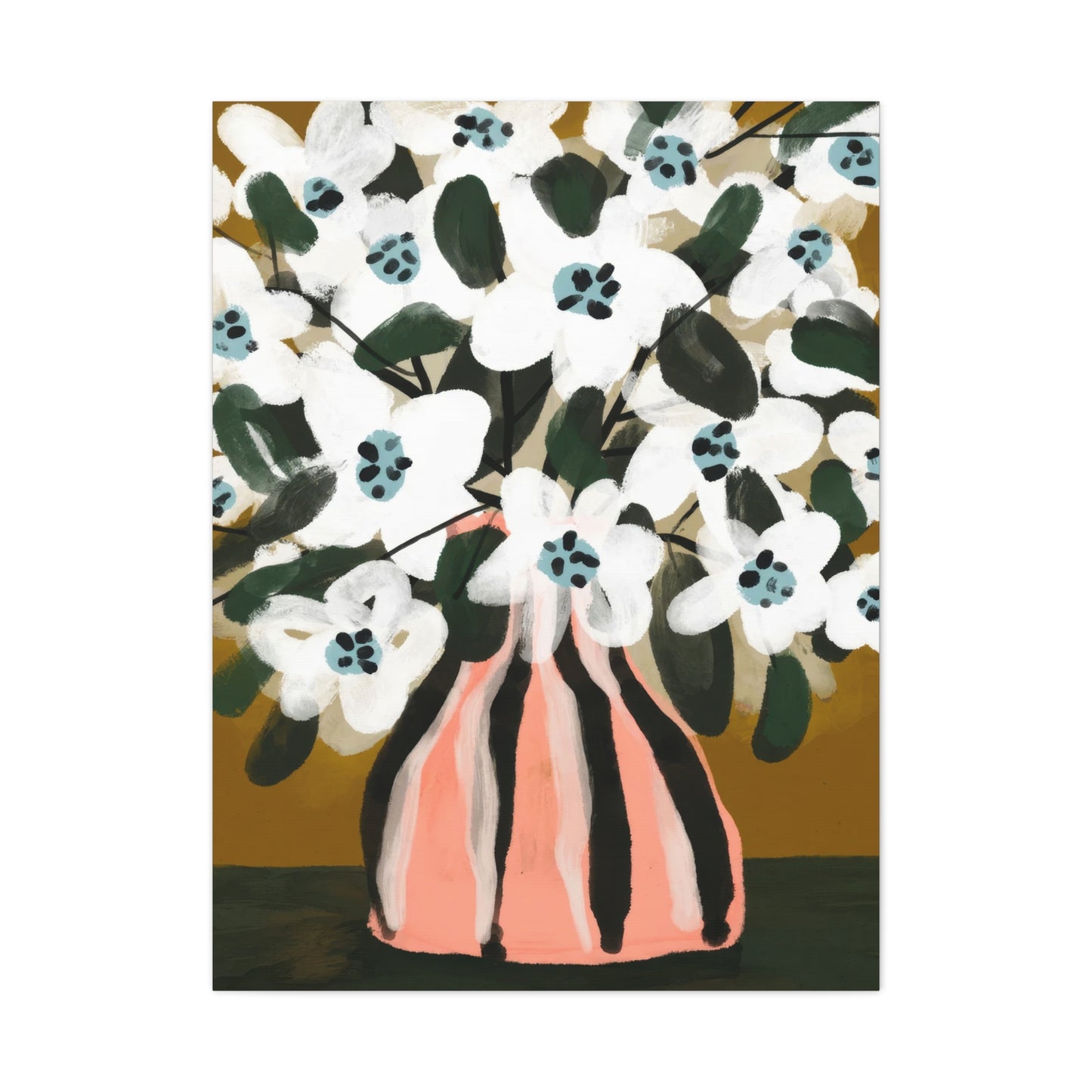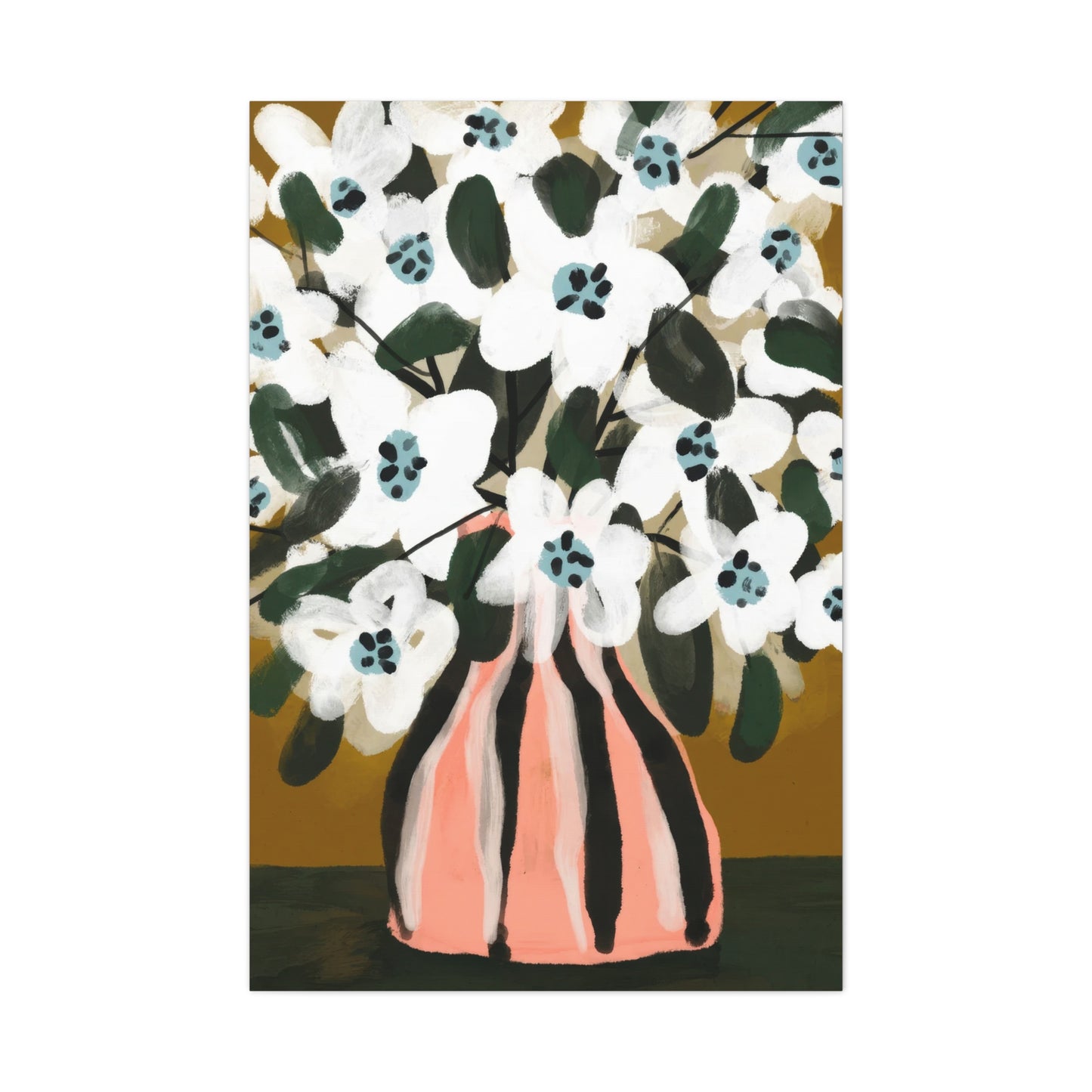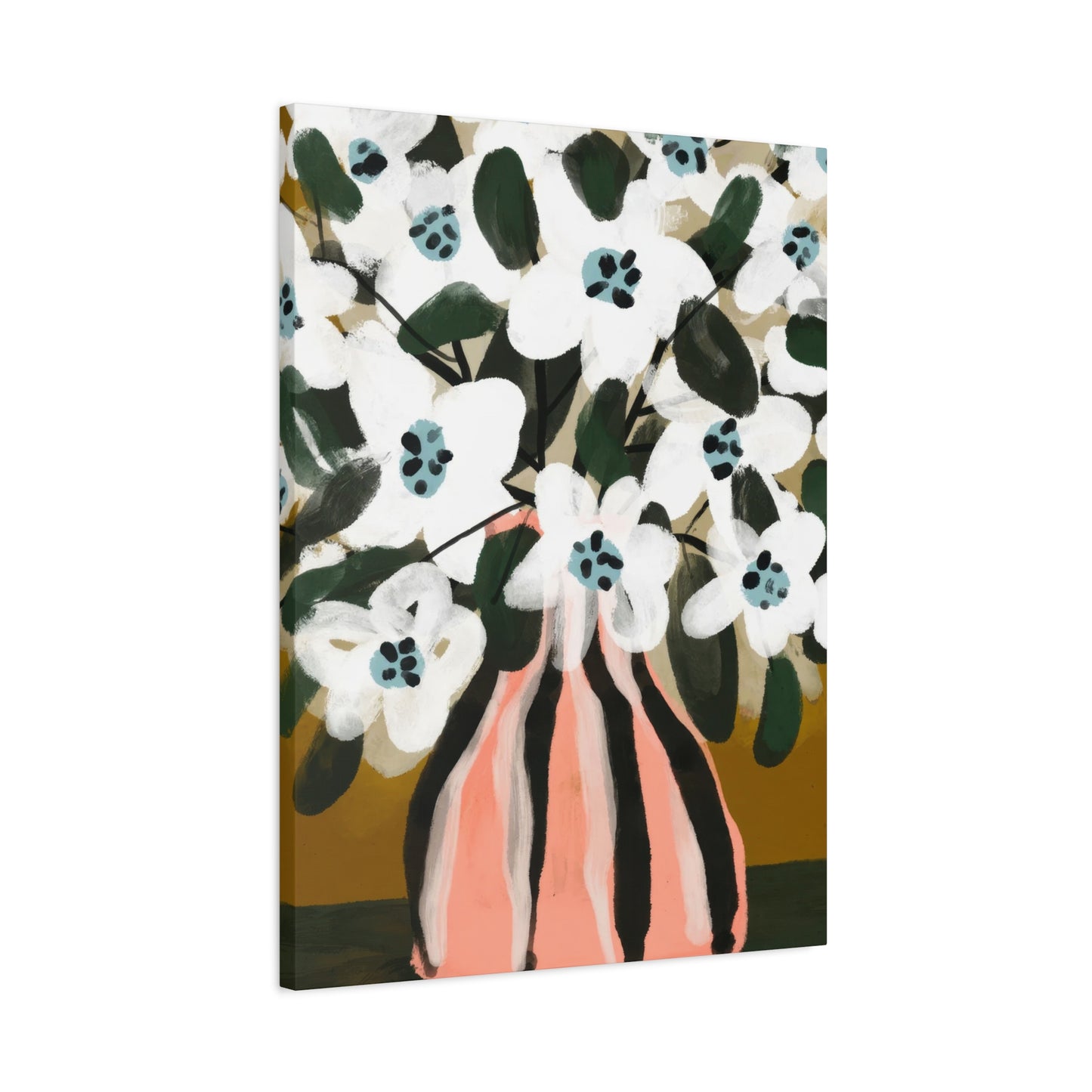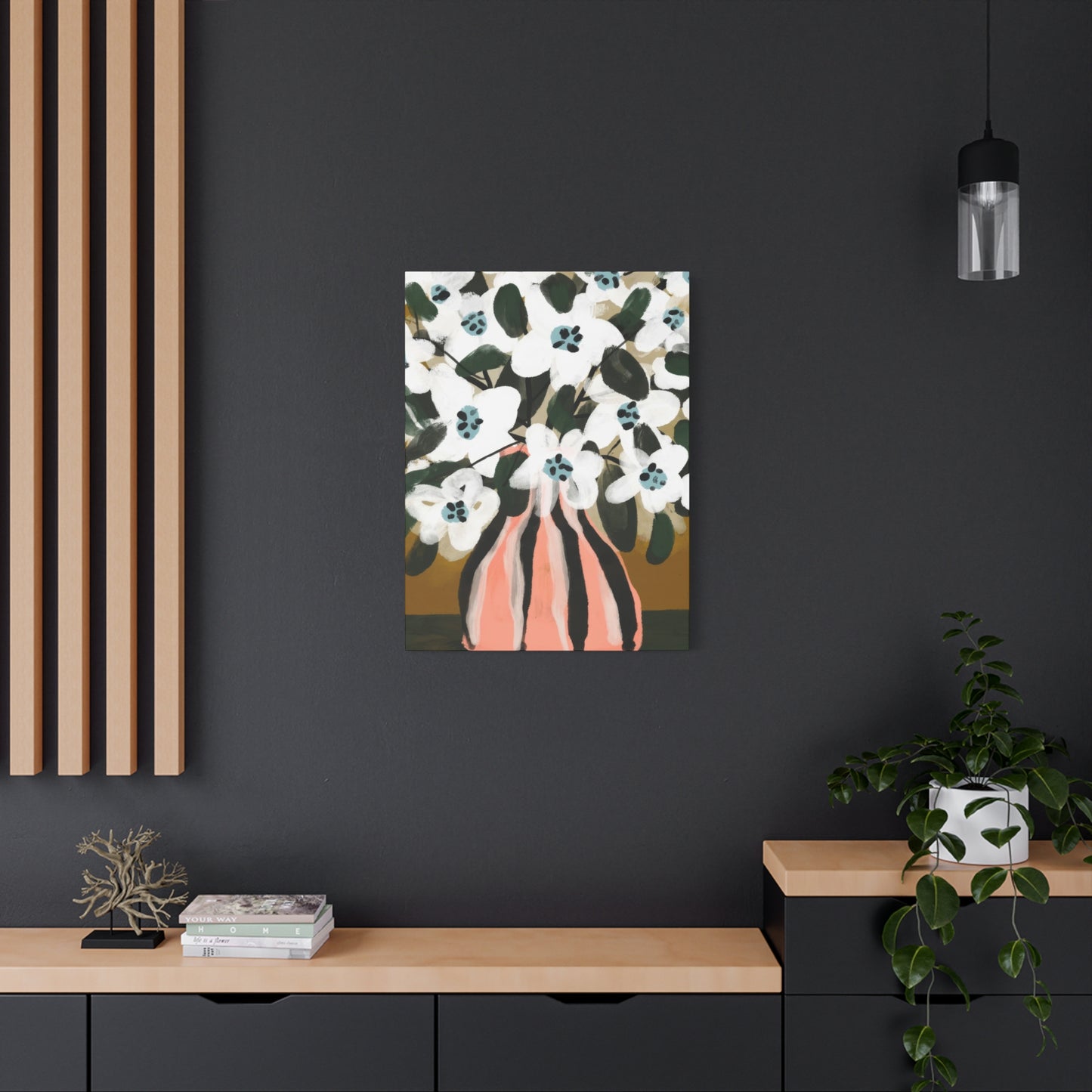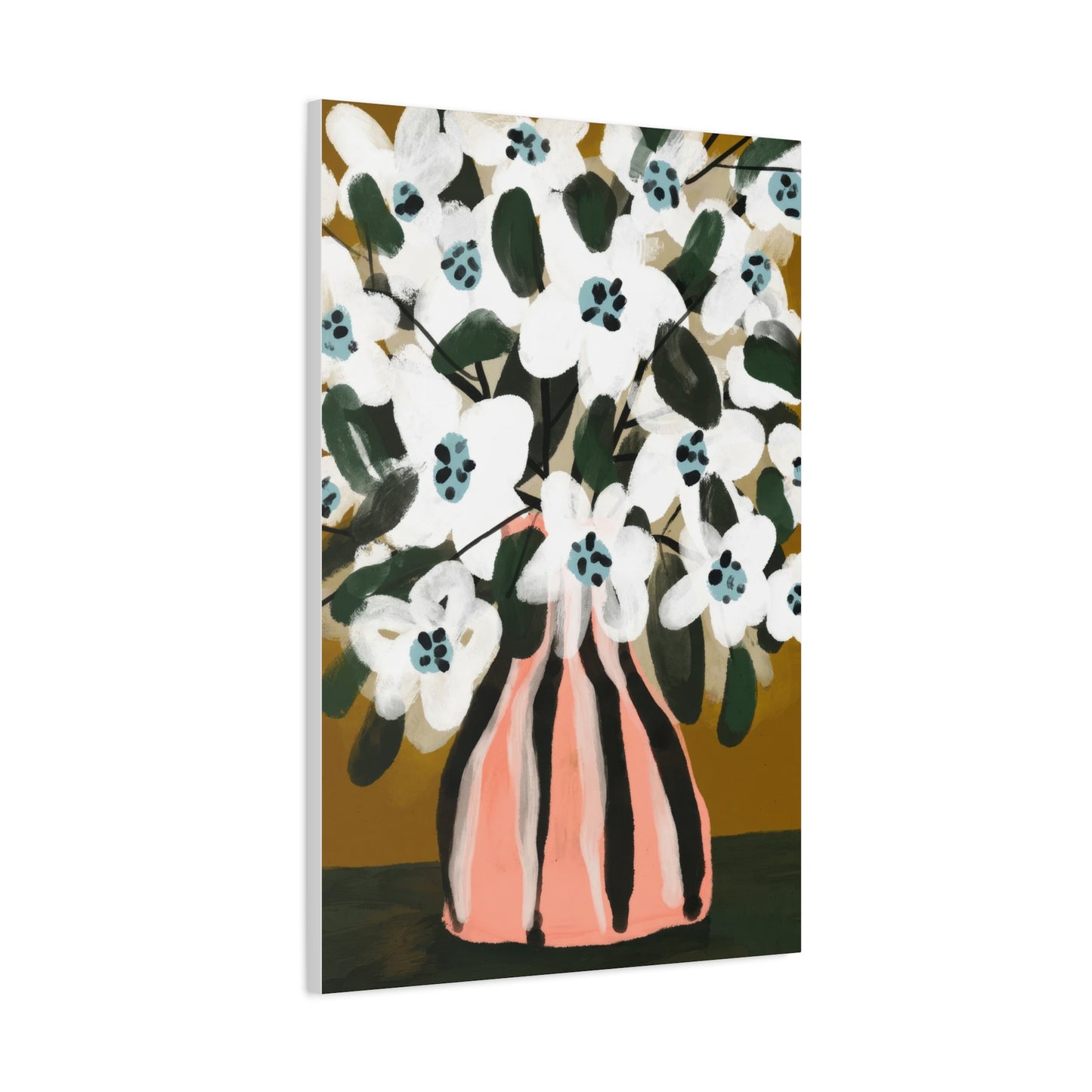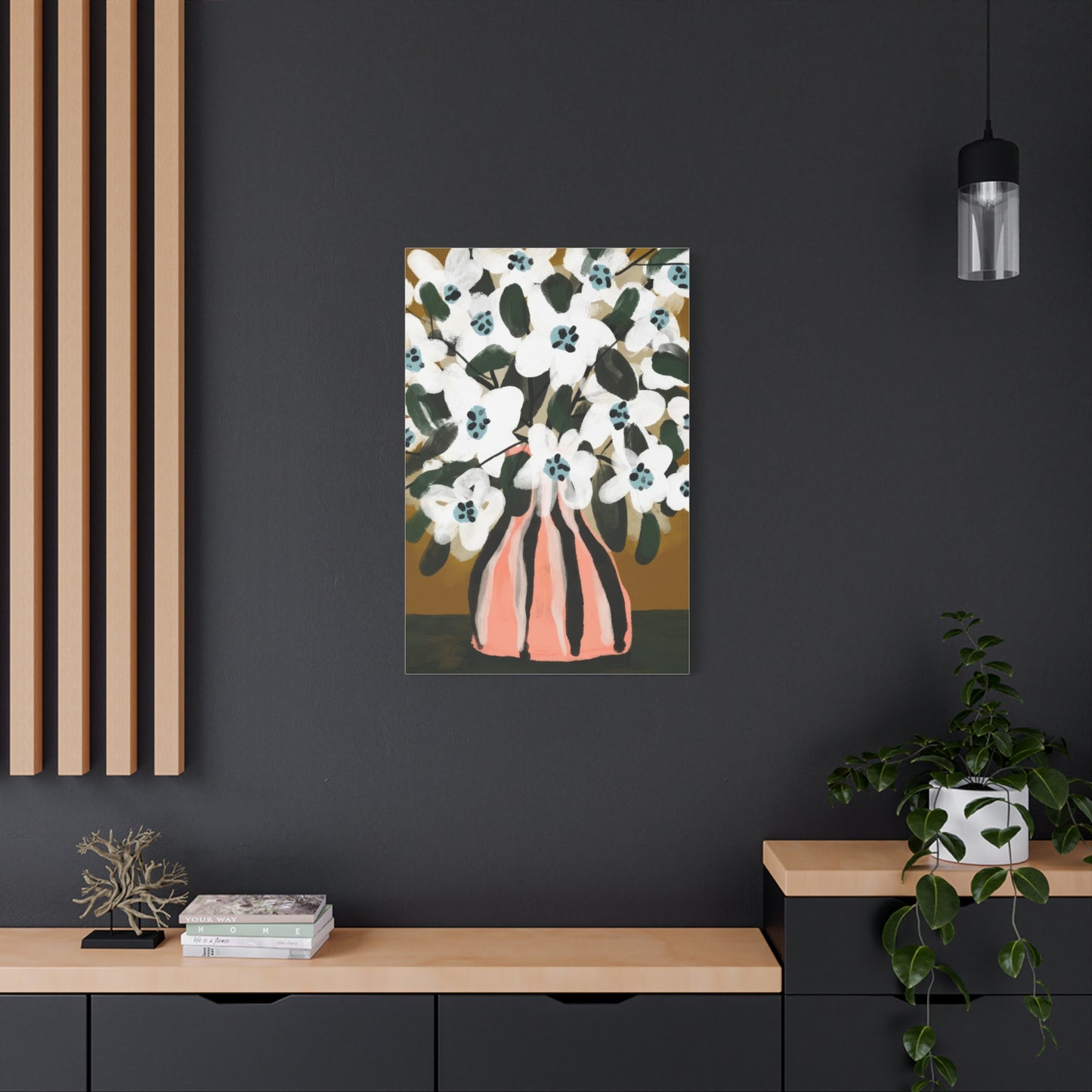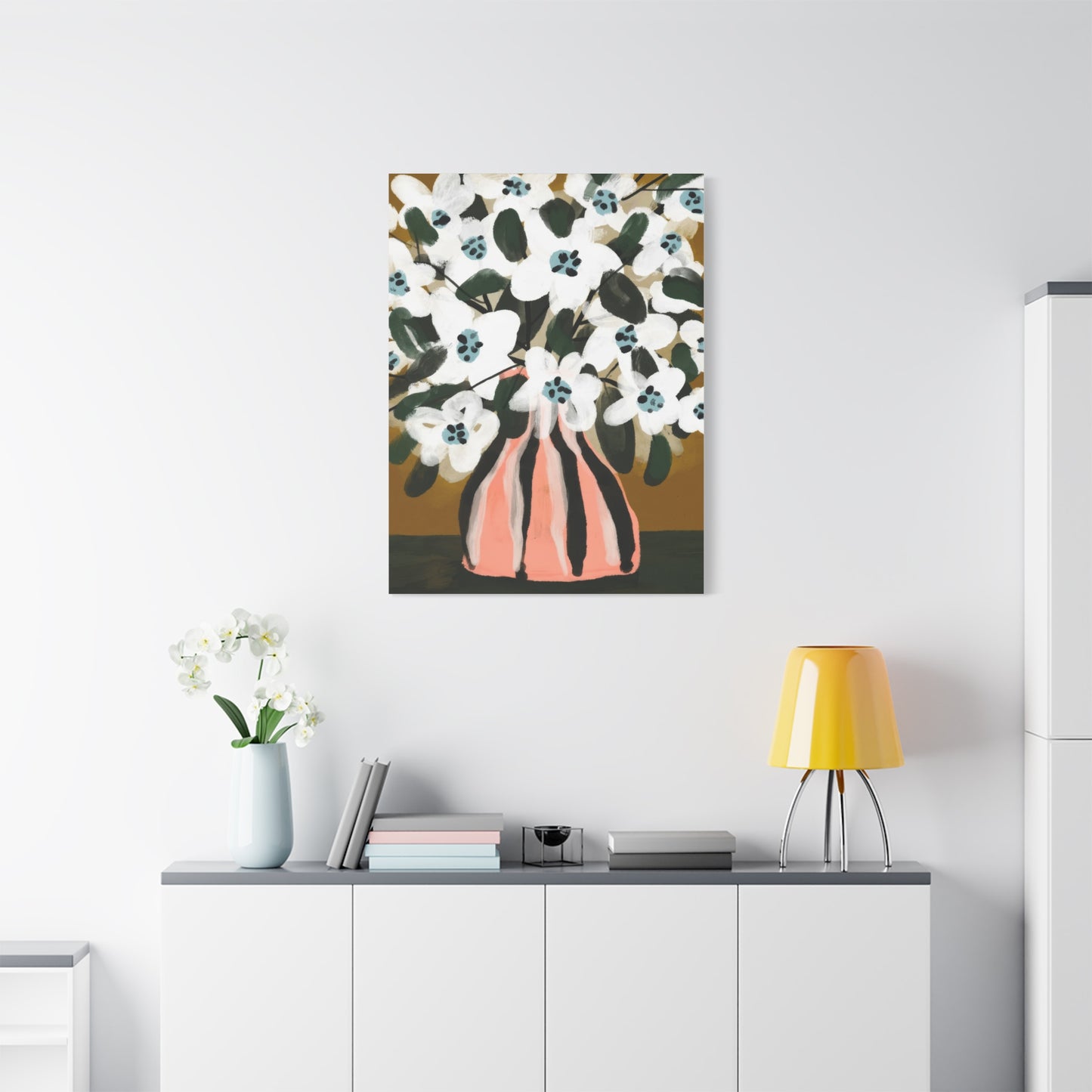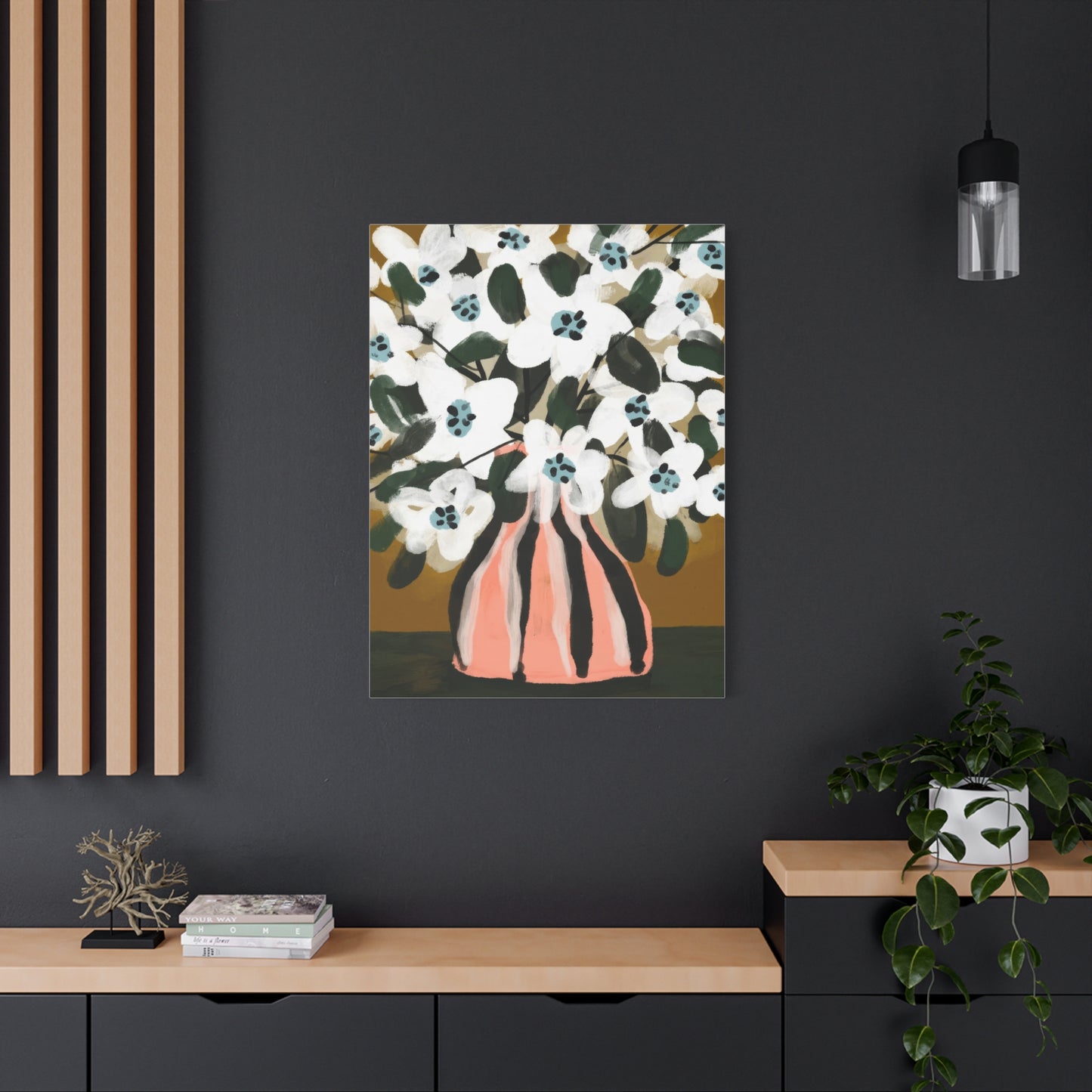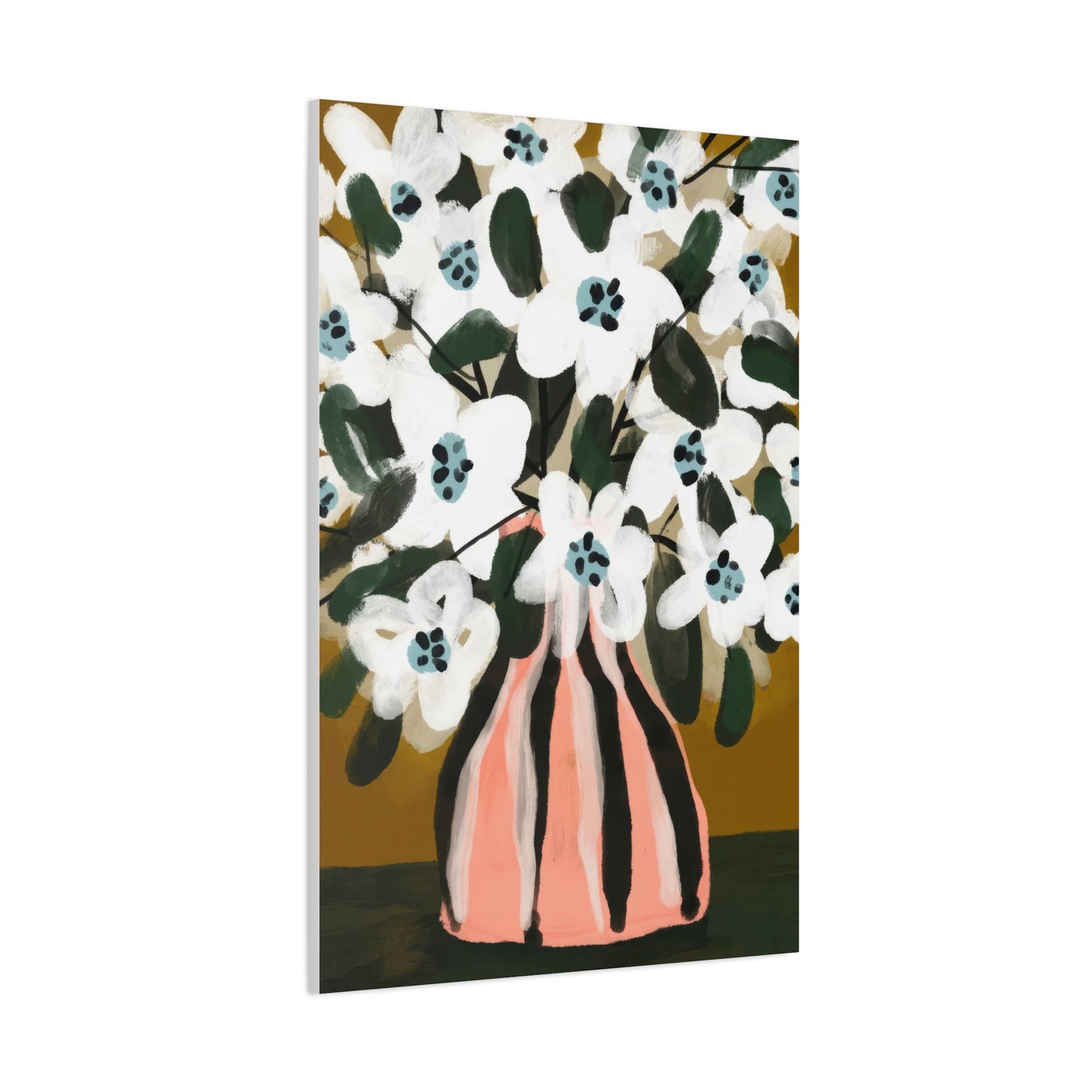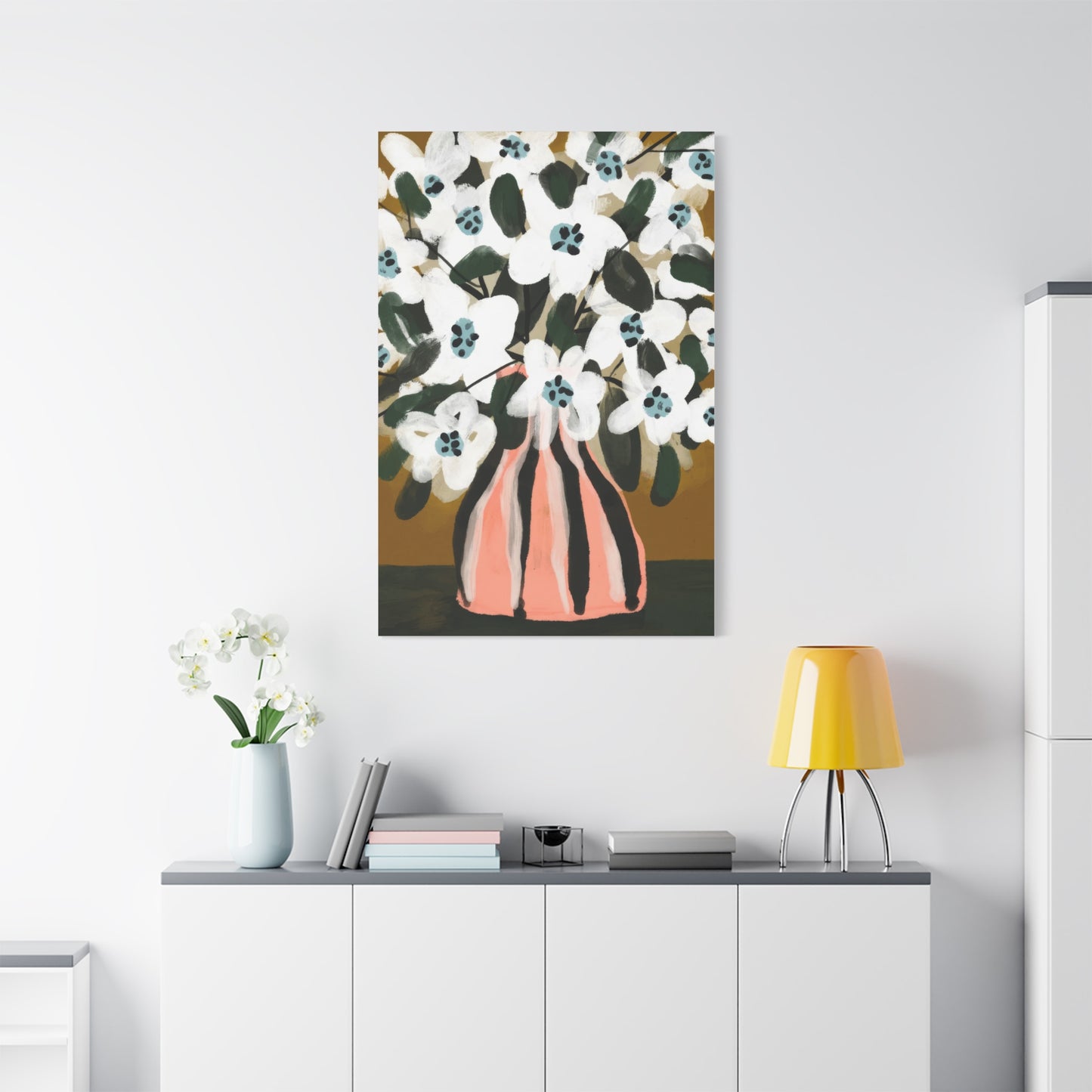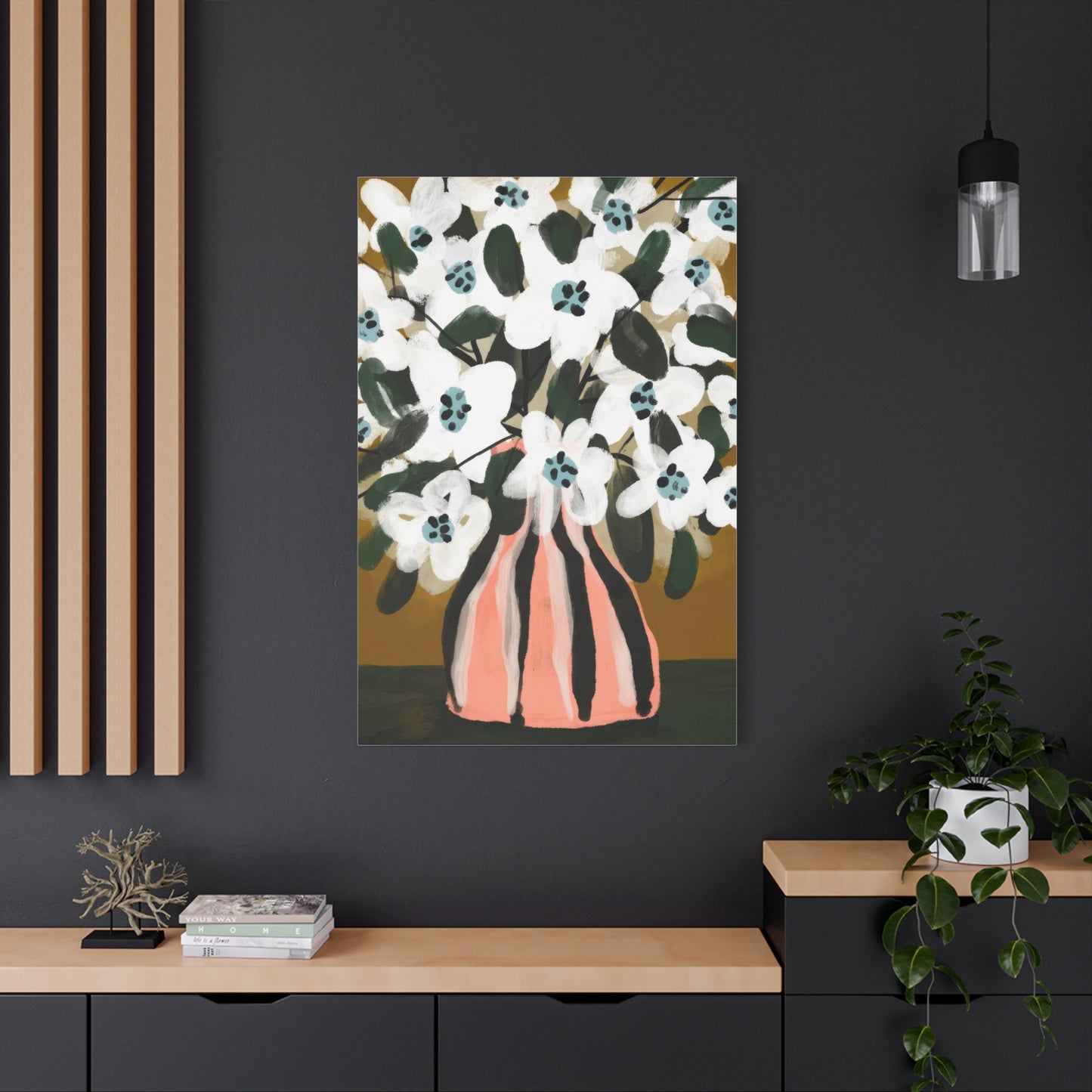Creating a Serene and Refined Atmosphere with Blooming Elegance Wall Art
Blooming elegance wall art represents a harmonious blend of natural beauty and artistic expression that has captivated interior designers and homeowners for generations. This distinctive form of decoration captures the delicate essence of flowers and botanical elements, transforming them into stunning visual pieces that elevate any room's atmosphere. The incorporation of floral themes into wall decorations creates an immediate connection with nature, bringing warmth, color, and life to indoor environments. When selecting pieces that showcase blooming elegance, you're not merely choosing decoration but investing in artwork that speaks to the timeless appeal of natural forms and their ability to inspire tranquility and joy.
The popularity of floral wall art has experienced remarkable growth in recent years as people seek to create living spaces that reflect their personal style while maintaining a connection to the natural world. These pieces serve multiple purposes, from acting as focal points in minimalist settings to complementing existing decor themes in more elaborate design schemes. The versatility of blooming elegance wall art makes it suitable for virtually any room, whether you're decorating a cozy bedroom, an elegant dining area, or a professional office space. Each piece tells a unique story through its composition, color palette, and artistic interpretation of botanical beauty.
Artists who specialize in creating blooming elegance wall art draw inspiration from various sources, including classical botanical illustrations, impressionist paintings, and contemporary design movements. This diversity ensures that there's a style to match every aesthetic preference, from vintage-inspired prints featuring detailed rose arrangements to abstract interpretations of wildflower meadows. The emotional impact of floral artwork extends beyond mere visual appeal, as different flowers carry symbolic meanings and evoke specific moods that can influence the overall ambiance of a space.
Exploring Different Styles of Floral Wall Decorations
The world of blooming elegance wall art encompasses an incredibly diverse range of artistic styles, each offering unique characteristics that appeal to different design sensibilities. Realistic botanical illustrations represent one end of the spectrum, featuring meticulously detailed renderings of flowers that capture every petal, stamen, and leaf with scientific precision. These works often draw inspiration from historical botanical studies and herbarium collections, appealing to those who appreciate the intersection of art and natural science. The attention to detail in these pieces makes them particularly suitable for traditional and classical interior designs where authenticity and craftsmanship are valued.
Abstract floral interpretations take a decidedly different approach, using flowers as a starting point for creative explorations of color, form, and texture. Artists working in this style might deconstruct the familiar shapes of blooms into geometric patterns, explosive color fields, or minimalist line drawings that suggest rather than explicitly depict botanical forms. This approach resonates with contemporary design aesthetics that favor bold statements and artistic innovation over literal representation. Abstract blooming elegance wall art can serve as conversation starters and add dynamic energy to modern living spaces.
Watercolor floral artwork occupies a beloved middle ground between realism and abstraction, characterized by soft edges, translucent layers, and a dreamy quality that evokes romance and gentleness. The medium itself lends a particular elegance to floral subjects, as the natural bleeding and blending of watercolor paints mirror the organic flow and delicacy of actual petals. These pieces work beautifully in spaces designed for relaxation and contemplation, such as bedrooms, reading nooks, or spa-like bathrooms. The subtle color gradations and light-filled quality of watercolor art can make rooms feel more spacious and airy.
Vintage and shabby chic styles of blooming elegance wall art tap into nostalgia and romanticism, often featuring faded colors, distressed finishes, and compositions reminiscent of Victorian-era flower paintings or French country gardens. These pieces typically showcase roses, peonies, lavender, and other traditionally beloved flowers arranged in informal bouquets or garden scenes. The aged appearance and soft color palettes make them ideal for country cottages, farmhouse-style kitchens, or any space where you want to create a sense of timeless charm and comfort.
Photographic floral art brings the immediacy and impact of modern photography to botanical subjects, capturing flowers in stunning detail and often employing dramatic lighting, unusual perspectives, or macro techniques to reveal hidden beauty. High-quality floral photography can range from studio shots with controlled backgrounds to nature photographs showing wildflowers in their natural habitats. The realism and clarity of photographic art make it particularly effective for creating strong visual impact in contemporary settings where clean lines and modern aesthetics predominate.
Color Psychology and Floral Artwork Selection
Understanding color psychology plays a crucial role in selecting blooming elegance wall art that will create the desired emotional atmosphere in your space. Different hues evoke distinct psychological responses and can significantly influence mood, energy levels, and even behavior within a room. When flowers are depicted in warm colors such as reds, oranges, and yellows, they tend to create feelings of warmth, excitement, and vitality. Red floral artwork, particularly featuring roses or poppies, can add passion and drama to a space, making it ideal for dining rooms where you want to stimulate conversation and appetite, or for accent walls in living areas where energy and warmth are desired.
Cool-toned blooming elegance wall art featuring blues, purples, and greens promotes calmness, serenity, and mental clarity. Blue flowers like hydrangeas, delphiniums, or forget-me-nots depicted in artwork can help create restful environments perfect for bedrooms or meditation spaces. Purple floral pieces, especially those featuring lavender or irises, combine the calming properties of blue with the richness of red, resulting in a sophisticated elegance that works beautifully in master bedrooms, dressing rooms, or formal sitting areas. Green, being the color most associated with nature and growth, provides a neutral yet refreshing backdrop that pairs well with virtually any other color in your decor scheme.
Neutral and monochromatic floral artwork offers versatility and timeless appeal, working seamlessly with changing decor trends and color schemes. Black and white floral photographs or drawings create striking contrast and sophistication, making them excellent choices for modern or minimalist interiors. Sepia-toned or grayscale botanical prints add a classic, elegant touch to traditional spaces while maintaining visual interest without competing with other design elements. These neutral pieces allow you to introduce texture and organic forms into your decor without committing to specific color palettes that might clash with future design changes.
Pastel floral artwork features soft, muted versions of colors that create gentle, soothing environments particularly suited to nurseries, powder rooms, or spaces designed for relaxation. Pale pinks, soft peaches, baby blues, and mint greens in blooming elegance wall art evoke springtime freshness and youthful innocence. These delicate hues work especially well in rooms with abundant natural light, where they can appear to glow softly throughout the day. Pastel floral pieces also complement shabby chic and cottage core design aesthetics perfectly.
Bold, saturated colors in floral artwork make powerful design statements and can serve as the primary color inspiration for an entire room's palette. Jewel-toned flowers depicted in rich emeralds, sapphires, rubies, and amethysts create luxurious, opulent atmospheres suitable for formal spaces or rooms where you want to make a dramatic impression. These intense colors work particularly well in larger pieces that can serve as the focal point of a room, anchoring the design scheme and providing a starting point for selecting coordinating accessories and furnishings.
Sizing and Placement Strategies for Maximum Impact
The size of blooming elegance wall art you select dramatically affects its impact and the way it interacts with the surrounding space. Understanding proper scaling ensures that your artwork enhances rather than overwhelms or gets lost in your room. Large-scale pieces, typically measuring 40 inches or more in width, work best as statement pieces above furniture like sofas, beds, or buffets. These substantial artworks can anchor a room and define the character of the entire space. When selecting oversized blooming elegance wall art, ensure that it occupies approximately two-thirds to three-quarters of the furniture width below it to maintain proper visual proportion.
Medium-sized floral artwork, ranging from 20 to 40 inches, offers versatility in placement options and can be used individually or grouped with other pieces to create gallery walls. These dimensions work well above desks, in hallways, flanking windows, or filling awkward wall spaces that are too small for large furniture but too prominent to leave bare. Medium pieces allow you to experiment with different arrangements and can be easily moved or reconfigured as your design preferences evolve. They also represent an accessible price point for many homeowners beginning to build their art collection.
Small floral prints and paintings, typically under 20 inches, excel in creating layered, collected looks when arranged in groups. These petite pieces can fill spaces like stairway walls, powder room accents, or clustered arrangements above side tables. The intimate scale of small blooming elegance wall art makes viewers lean in and appreciate details, creating personal, cozy moments in your decor. Collections of small botanical prints in matching frames can create sophisticated gallery walls that tell a cohesive story while adding visual interest to otherwise overlooked spaces.
The height at which you hang blooming elegance wall art significantly affects how it's perceived and interacted with in a space. The general rule suggests hanging artwork so that its center sits at eye level, typically around 57 to 60 inches from the floor. However, this guideline should be adjusted based on ceiling height, furniture placement, and the specific function of the room. In dining rooms where people are primarily seated, you might hang art slightly lower than in entryways where it will be viewed while standing. Above furniture, leave 6 to 8 inches of space between the top of the furniture and the bottom of the frame to create visual connection without crowding.
Creating gallery walls with multiple pieces of blooming elegance wall art allows for creative expression and can transform an entire wall into an artistic focal point. When planning a gallery arrangement, lay out your pieces on the floor first to experiment with different configurations. Balanced, symmetrical arrangements create formal, organized looks, while asymmetrical layouts feel more casual and dynamic. Maintain consistent spacing between frames, typically 2 to 3 inches, to create cohesion even when using different sizes and styles. Consider using a unifying element such as consistent frame colors, mat boards, or a common color theme across the different floral pieces to tie the collection together.
Corner spaces and alcoves present unique opportunities for blooming elegance wall art placement. These often-overlooked areas can become charming vignettes when decorated with appropriately scaled floral pieces. Pair corner artwork with complementary elements like small plants, decorative objects, or accent lighting to create complete design moments. In rooms with architectural features like built-in shelving or wainscoting, consider how your floral artwork can work with rather than against these elements, perhaps aligning the top of frames with molding lines or using the natural divisions created by paneling to organize multiple pieces.
Materials and Mediums in Contemporary Floral Art
The materials and mediums used to create blooming elegance wall art significantly influence both the aesthetic quality and longevity of the piece. Traditional oil paintings on canvas remain among the most valued and collectible forms of floral artwork, prized for their rich texture, depth of color, and ability to capture light in ways that other mediums cannot replicate. The thick application of paint and visible brushstrokes in oil paintings add dimensional interest that can be appreciated from different angles and lighting conditions. Original oil paintings represent investment pieces that can appreciate in value over time, particularly when created by established artists.
Acrylic paintings offer many of the visual benefits of oils while providing faster drying times and greater flexibility for artists. Modern acrylic formulations can achieve remarkable depth and vibrancy, making them popular choices for contemporary blooming elegance wall art. Acrylics work well on various surfaces beyond traditional canvas, including wood panels, mixed media substrates, and even unconventional materials like metal or glass. The medium's versatility allows artists to create everything from smooth, photorealistic florals to heavily textured, impasto-style pieces with pronounced three-dimensional surfaces.
High-quality giclée prints have revolutionized the accessibility of fine art, allowing reproduction of original paintings and photographs with exceptional color accuracy and detail. These archival-quality prints use specialized inkjet technology to transfer images onto canvas or fine art paper, creating results that closely mimic the appearance of original works. For blooming elegance wall art, giclée printing enables wider distribution of beautiful floral designs at more accessible price points while maintaining museum-quality standards. When selecting giclée prints, look for works produced with archival inks on acid-free substrates to ensure longevity and color stability.
Framed botanical illustrations on paper represent a classic approach to floral wall decoration with roots in scientific documentation and educational materials. Antique botanical prints, originally created for herbals and botanical studies, have become highly collectible, while contemporary reproductions and new illustrations in traditional styles remain popular. The crisp lines, accurate proportions, and detailed labeling characteristic of botanical illustrations appeal to those who appreciate both artistic beauty and natural history. These works typically feature individual specimens against neutral backgrounds, making them ideal for creating organized, cohesive arrangements.
Metal prints offer a modern, contemporary approach to displaying blooming elegance wall art with unique visual properties. The infusion dye sublimation process transfers images directly onto specially coated aluminum panels, creating artwork with exceptional color vibrancy, depth, and a distinctive luminous quality. Metal prints resist fading, moisture, and scratches, making them practical choices for high-humidity environments like bathrooms or kitchens. The sleek, frameless presentation of metal prints contributes to clean, modern aesthetics while allowing the floral imagery to appear almost three-dimensional.
Mixed media approaches combine various materials and techniques to create textured, layered blooming elegance wall art with unique character. Artists might incorporate pressed flowers, fabric, paper collage elements, metallic leaf, resin, or found objects into their floral compositions. These pieces offer tactile interest and visual complexity that draws viewers in for closer examination. Mixed media floral art works particularly well in eclectic or bohemian design schemes where texture and handcrafted elements are valued.
Wood-mounted prints and artwork create warm, organic presentations particularly suited to rustic, farmhouse, or nature-inspired decor themes. The visible wood grain and natural variations in the substrate add character that complements botanical subjects. Wood prints can be created through various methods, including direct printing onto prepared wood surfaces or mounting prints onto wood panels. The natural material connection between the wooden substrate and floral subject matter creates aesthetic harmony that reinforces connections to nature.
Room-Specific Applications for Floral Wall Art
Living rooms provide excellent opportunities to incorporate blooming elegance wall art as focal points that set the tone for the entire home. Large-scale floral pieces above the sofa can anchor the seating area while introducing color, texture, and natural motifs that make the space feel more inviting. In open-concept homes, strategically placed floral artwork can help define different zones within the larger space, using color and style cues to distinguish the living area from adjacent dining or kitchen spaces. Consider the sightlines from your main entrance when selecting living room pieces, as this artwork often makes the first impression on guests entering your home.
Bedroom applications of blooming elegance wall art should prioritize creating peaceful, restful atmospheres conducive to relaxation and sleep. Soft-hued floral pieces featuring calming colors like lavender, soft pink, or pale blue work especially well above headboards or on walls opposite the bed where they'll be viewed before sleep. The bedroom offers opportunities for more personal, intimate artwork selections that reflect your private aesthetic preferences rather than considering guest perspectives. Pairs or triptychs of coordinating floral pieces flanking a bed can create symmetrical, balanced arrangements that reinforce the bedroom's role as a restful sanctuary.
Dining rooms benefit from blooming elegance wall art that stimulates appetite and conversation while creating an atmosphere appropriate for gathering and celebration. Rich, warm-toned floral pieces featuring flowers like red roses, orange dahlias, or golden sunflowers can energize the space and create warmth that encourages lingering over meals. Consider the lighting conditions in your dining room, as many dining spaces have dimmer switches or chandelier lighting that changes throughout the day. Artwork that maintains visual interest under various lighting conditions will serve the space better than pieces dependent on bright, direct light.
Kitchen spaces increasingly incorporate decorative elements beyond purely functional items, and blooming elegance wall art can soften the hard surfaces and utilitarian aspects of kitchen design. Herb and vegetable flower prints create natural thematic connections to cooking and food preparation while adding color to often neutral kitchen palettes. Consider durable, easy-to-clean formats like metal or acrylic-covered prints in kitchens where cooking moisture and potential splashing are concerns. Smaller pieces arranged on open shelving or in breakfast nooks can introduce personality without overwhelming the functional workspace.
Bathroom decor benefits tremendously from the addition of blooming elegance wall art that transforms purely functional spaces into spa-like retreats. Moisture-resistant formats become essential in these high-humidity environments, making metal prints, sealed canvas, or properly framed pieces with protective glazing the best choices. Floral themes naturally complement the cleansing and renewal associations of bathrooms while softening the hard surfaces of tile, porcelain, and glass typical in these spaces. Smaller powder rooms offer opportunities for bolder, more dramatic floral pieces that create memorable impressions in compact spaces.
Home office and workspace applications of floral wall art can enhance productivity while reducing stress associated with work environments. Studies suggest that views of nature, including representations of natural elements in artwork, can improve focus, creativity, and overall wellbeing during work hours. Select blooming elegance wall art for offices that energizes without overwhelming, avoiding overly busy or chaotic compositions that might prove distracting during concentration-intensive tasks. Positioning artwork opposite your desk rather than directly behind your screen creates pleasant break points for your eyes during long work sessions.
Entryways and foyers set the tone for your entire home, making them prime locations for statement blooming elegance wall art that welcomes guests and expresses your personal style. These transition spaces can accommodate bolder, more dramatic pieces that might overwhelm smaller rooms, and they provide opportunities to incorporate seasonal or changeable artwork since you'll view and interact with these pieces multiple times daily. Consider scale carefully in entryways, ensuring that artwork doesn't visually crowd the space or compete with architectural features like doors, staircases, or built-in elements.
Framing and Presentation Techniques
The framing choices you make for blooming elegance wall art dramatically affect how the piece integrates with your decor and how the artwork itself is perceived. Traditional wood frames in finishes like warm walnut, rich mahogany, or painted white bring classic elegance that complements both antique botanical prints and contemporary floral paintings. The width and profile of frame molding should relate proportionally to the size of the artwork, with larger pieces generally requiring more substantial frames to provide adequate visual weight and support. Ornate frames with decorative corners and carved details suit traditional, Victorian, or French country aesthetics, while simpler profiles work better in transitional and contemporary settings.
Modern metal frames in finishes like brushed aluminum, matte black, or brass offer sleek, contemporary presentations that won't compete with the artwork itself. These streamlined frames work particularly well with photographic floral prints, abstract botanical pieces, or any blooming elegance wall art intended for modern or minimalist spaces. Thin metal frames create almost floating appearances that emphasize the artwork while minimizing the visual presence of the frame itself. Consider how metal frame finishes coordinate with other metal elements in your room, such as light fixtures, furniture hardware, and decorative accessories.
Mat boards serve multiple functions in framing blooming elegance wall art, including protecting the artwork from direct contact with glazing, creating visual breathing room around the image, and bridging color or style gaps between artwork and frame. White and off-white mats remain classic choices that work with virtually any color palette and keep the focus on the artwork itself. Colored mats can pick up and emphasize specific hues within the floral composition, though this approach requires careful consideration to avoid appearing dated. Double or even triple matting with subtle color variations adds depth and sophistication to framing presentations.
Glazing options for framed blooming elegance wall art include regular glass, non-reflective glass, acrylic, and UV-protective options, each with distinct advantages. Standard glass provides clarity at an economical price point but can create troublesome reflections depending on room lighting. Non-reflective or museum glass eliminates glare issues, allowing artwork to be viewed clearly from any angle, though at a higher cost. Acrylic glazing offers shatter resistance and lighter weight, making it preferable for large pieces or homes with children, though it scratches more easily than glass. UV-protective glazing options slow fading and deterioration, particularly important for valuable original artworks or pieces in rooms with direct sunlight exposure.
Floating frames create modern, dimensional presentations where artwork appears to hover within the frame, separated by a small gap that adds depth and visual interest. This technique works beautifully with canvas pieces, wood-mounted prints, or artwork on other rigid substrates. The three-dimensional effect created by floating frames adds contemporary sophistication while allowing the edges and sometimes even the sides of the artwork to remain visible as part of the overall presentation. This approach particularly suits blooming elegance wall art with gallery-wrapped edges or pieces where the substrate itself contributes to the aesthetic.
Frameless mounting options offer ultra-modern presentations that maximize the visual impact of the artwork itself while creating seamless, contemporary looks. Canvas pieces can be stretched over frames in gallery-wrap style, with the image continuing around the edges, eliminating the need for additional framing. Metal and acrylic prints often come with integral mounting systems that allow frameless floating installation directly against walls. These minimalist presentation styles work best in modern, contemporary, or industrial design settings where clean lines and uncluttered aesthetics are priorities.
Grouping frames cohesively when creating gallery walls requires thoughtful consideration of frame styles, finishes, and proportions. Matching frames across all pieces create unified, organized looks suitable for formal spaces or symmetrical arrangements. Mixing frame styles within parameters, such as using various wood finishes while maintaining similar profiles or combining black frames in different widths, creates collected looks with more personality and visual interest. The key to successful mixed framing lies in identifying one or two unifying elements that tie disparate pieces together into a coherent whole.
Seasonal and Thematic Floral Selections
Spring-themed blooming elegance wall art captures the awakening and renewal associated with this season through depictions of cherry blossoms, tulips, daffodils, and other early-blooming flowers. The fresh pastels and vibrant greens characteristic of spring floral artwork inject energy and optimism into spaces, making them particularly appealing during late winter when anticipation for warmer weather builds. Spring floral pieces work beautifully in spaces associated with new beginnings, such as nurseries, guest rooms, or home offices where fresh perspectives are valued. The lightness and airiness of spring flowers create feelings of expansion and possibility.
Summer floral artwork features the abundance and intensity of peak blooming season, showcasing flowers like roses, peonies, hydrangeas, sunflowers, and dahlias in full, lush displays. The rich, saturated colors typical of summer blooms bring warmth and exuberance to interiors, creating cheerful, energetic atmospheres. Summer-themed blooming elegance wall art often depicts garden scenes or generous bouquets that convey abundance and celebration. These pieces work particularly well in gathering spaces like dining rooms, kitchens, and outdoor living areas where the joyful, social energy of summer feels most appropriate.
Autumn floral selections move toward deeper, richer tones featuring late-season bloomers like chrysanthemums, asters, and marigolds alongside fall foliage and harvest elements. The warm oranges, deep reds, golden yellows, and burgundy tones of autumn floral artwork create cozy, intimate atmospheres perfect for creating comfortable retreat spaces. Fall-themed pieces often incorporate natural elements beyond flowers, such as berries, seed pods, or autumn leaves that celebrate the seasonal transition. These works pair beautifully with natural wood tones, leather furniture, and textile-rich rooms designed for comfort during cooler months.
Winter floral artwork might seem paradoxical but offers unique opportunities to bring natural beauty to the coldest season through depictions of amaryllis, paperwhites, hellebores, and evergreen branches with berries. Winter blooming elegance wall art often features sophisticated, muted palettes with silver, white, deep green, and burgundy tones that feel appropriate to the season's contemplative character. These pieces can incorporate holiday themes subtly through flowers and greenery traditionally associated with winter celebrations without appearing overly festive. Winter floral art creates warmth and life during months when outdoor gardens lie dormant.
Year-round versatile floral artwork features timeless flowers like roses, orchids, or mixed garden blooms in neutral or classic color palettes that transcend seasonal associations. These pieces serve as permanent installations that remain appropriate regardless of the time of year, offering reliability and consistency in your decor. Neutrally colored blooming elegance wall art in blacks, whites, grays, or sepia tones eliminates seasonal specificity while maintaining the organic softness and natural connection that floral imagery provides. These versatile pieces prove particularly valuable in formal spaces or when you prefer not to rotate seasonal decorations.
Thematic collections based on specific flower types allow for focused, cohesive design statements throughout a home or within specific rooms. Rose-themed collections span incredible variety from antique botanical illustrations to contemporary abstract interpretations, all unified by this universally beloved flower. Wildflower themes create casual, bohemian feels appropriate for relaxed, nature-inspired spaces. Tropical flower collections featuring orchids, birds of paradise, and hibiscus introduce exotic elegance and vibrant colors that transport viewers to lush, faraway environments. Single-flower themed approaches create sophisticated, curated looks that reflect specific aesthetic preferences or symbolic meanings.
Historical and Cultural Influences on Floral Art
Victorian floral painting traditions have profoundly influenced contemporary blooming elegance wall art through their detailed realism, romantic compositions, and the language of flowers concept where specific blooms carried coded meanings. During the Victorian era, floral artwork served both decorative and communicative purposes, with entire conversations conducted through carefully selected flower arrangements. This tradition of symbolic meaning adds layers of significance to floral artwork that extends beyond visual appeal. Modern pieces inspired by Victorian aesthetics often feature roses, forget-me-nots, pansies, and other flowers rich with historical symbolism, presented in lush, romantic compositions reminiscent of this influential period.
Japanese floral art traditions, particularly ikebana and botanical paintings, emphasize simplicity, asymmetry, and the appreciation of negative space in ways that contrast sharply with Western floral abundance. The Japanese aesthetic principles of wabi-sabi, finding beauty in imperfection and transience, translate beautifully into blooming elegance wall art that celebrates the ephemeral nature of flowers. Cherry blossom art, deeply significant in Japanese culture, represents the beauty and briefness of life, creating artwork that combines visual appeal with philosophical depth. The clean lines, thoughtful composition, and restrained color palettes of Japanese-inspired floral art suit minimalist and zen-influenced design aesthetics.
Dutch Golden Age still life paintings set standards for floral art that continue influencing contemporary work centuries later. These baroque compositions featured impossibly abundant flower arrangements combining blooms from different seasons, symbolizing wealth, knowledge of botany, and the transience of earthly beauty. The dramatic lighting, rich colors, and meticulous detail of Dutch floral paintings appeal to those who appreciate traditional, classical art forms. Modern interpretations of this style maintain the dramatic impact while adapting compositions and color palettes to contemporary tastes and interiors.
French Impressionist approaches to floral subjects revolutionized how artists depicted flowers, moving away from precise botanical accuracy toward capturing the impression and emotional essence of blooming gardens. Artists like Monet, Renoir, and Caillebotte created floral paintings that emphasized light, color, and atmosphere over detail, resulting in works that feel alive with movement and natural energy. Contemporary blooming elegance wall art influenced by Impressionism features loose brushwork, luminous color palettes, and compositions that suggest rather than precisely define floral forms. This approach creates artwork that adds light and airiness to spaces while maintaining sophisticated artistic credibility.
Art Nouveau's organic, flowing approach to floral motifs created distinctive decorative styles characterized by sinuous lines, stylized natural forms, and elegant integration of flowers into overall compositions. Popular during the late 19th and early 20th centuries, Art Nouveau floral designs remain influential in contemporary decorative arts. Blooming elegance wall art inspired by this movement features graceful, curved lines and flowers that seem to grow and flow across the composition in choreographed movements. The ornamental quality of Art Nouveau floral art makes it particularly suitable for creating cohesive period-inspired interiors or adding elegance to contemporary spaces that appreciate historical design movements.
Contemporary street art and pop art have brought fresh, unexpected approaches to floral subjects, transforming blooming elegance wall art through bold graphics, unconventional color combinations, and urban aesthetics. Artists working in these styles might combine traditional flower imagery with graffiti elements, political statements, or pop culture references, creating artwork that challenges conventional expectations of what floral art should be. These modern interpretations appeal to younger audiences and contemporary design sensibilities that value edge, personality, and cultural relevance alongside beauty. Urban-inspired floral pieces work particularly well in loft spaces, modern apartments, and edgy, eclectic interiors.
Creating Cohesive Color Stories with Floral Art
Monochromatic color schemes using blooming elegance wall art in varying shades of a single hue create sophisticated, cohesive looks that feel intentional and refined. An all-white floral arrangement might include ivory, cream, white, and pale gray blooms against subtle neutral backgrounds, creating elegant, serene spaces appropriate for bedrooms, bathrooms, or meditation areas. Blue monochromatic schemes featuring flowers in navy, cobalt, sky blue, and powder blue create calming, expansive feelings suitable for bedrooms or offices. The restricted color palette allows subtle variations in tone and saturation to create visual interest without the potential discord of multiple competing colors.
Analogous color schemes use flowers in hues adjacent on the color wheel, such as red-orange-yellow or blue-green-purple combinations, creating harmonious, naturally pleasing compositions. These color relationships occur frequently in nature, making them feel organic and comfortable in floral artwork. A blooming elegance wall art piece featuring purple irises, blue delphiniums, and pink roses creates a cool, harmonious palette, while another showcasing red poppies, orange dahlias, and yellow sunflowers produces warm, energetic feelings. Analogous schemes offer more color variety than monochromatic approaches while maintaining cohesion and preventing color clash.
Complementary color schemes pair flowers in opposite colors on the color wheel, such as purple and yellow or blue and orange, creating dynamic, high-energy compositions with maximum color contrast. These bold combinations make powerful visual statements and work best in spaces where you want artwork to command attention and energize the environment. A piece featuring purple lavender against bright yellow backgrounds creates striking contrast, as does blue hydrangeas paired with orange accents. Complementary schemes should be used thoughtfully, ensuring the high contrast serves your design goals rather than overwhelming the space.
Triadic color schemes employ flowers in three colors equally spaced around the color wheel, such as red-yellow-blue or orange-green-purple, creating balanced yet vibrant compositions. These arrangements offer extensive color variety while maintaining underlying harmony through the geometric relationship between hues. Blooming elegance wall art using triadic schemes can tie together multiple colors already present in your decor, serving as a unifying element that justifies various color choices throughout the room. The complexity of triadic schemes makes them suitable for eclectic or maximalist design approaches where visual richness is desired.
Neutral-based schemes featuring flowers in whites, creams, beiges, grays, and soft browns create versatile artwork that adapts to changing decor trends and color schemes. These understated pieces provide organic softness and natural forms without imposing specific color requirements on surrounding elements. Neutral blooming elegance wall art works particularly well in spaces where you want to highlight architectural features, furniture, or other design elements rather than making the artwork itself the primary focus. The subtle beauty of neutral floral pieces rewards close viewing while maintaining peaceful, unobtrusive presence.
Seasonal color progression allows you to rotate blooming elegance wall art throughout the year, keeping your spaces feeling fresh and aligned with natural cycles. Spring pieces might feature pastel pinks, soft yellows, and fresh greens that reflect new growth. Summer art could transition to vibrant, saturated colors in hot pinks, bright oranges, and deep purples that capture peak blooming intensity. Fall pieces would incorporate russet reds, golden yellows, and warm oranges reflecting harvest and changing foliage. Winter artwork might feature cool whites, silvers, deep greens, and burgundy tones appropriate to the contemplative season. This rotational approach keeps your decor dynamic and responsive to the changing year.
Integrating Floral Art with Various Design Styles
Modern minimalist spaces benefit from blooming elegance wall art that maintains clean lines and restrained composition while introducing organic softness that prevents sterility. Large-scale pieces featuring single flower stems against neutral backgrounds or abstract floral interpretations with generous negative space complement minimalist aesthetics perfectly. The key lies in selecting artwork that adds life and natural connection without cluttering the simplified environment that defines minimalism. Black and white or monochromatic floral photographs particularly suit this design approach, providing visual interest through form and composition rather than color complexity.
Traditional and classical interiors find natural partners in blooming elegance wall art featuring realistic botanical illustrations, Dutch-style still life paintings, or Victorian-inspired floral arrangements. These spaces can accommodate more ornate framing, richer colors, and detailed compositions that would overwhelm simpler design schemes. Oil paintings on canvas in traditional gilded frames or antique botanical prints in carved wood frames enhance the formal, established character of classical rooms. The historical connection between fine floral art and aristocratic interiors makes this pairing particularly authentic and appropriate.
Farmhouse and rustic design styles embrace blooming elegance wall art that feels organic, unpretentious, and connected to agricultural traditions. Wildflower pieces, herb gardens, sunflower fields, and casual garden scenes complement the lived-in, comfortable aesthetic of farmhouse decor. Wood-mounted prints, distressed frames, and pieces featuring mason jars or galvanized containers as vases reinforce the country connection. The colors in farmhouse floral art typically lean toward natural, unsaturated tones that echo aged paint, weathered wood, and sun-bleached textiles characteristic of authentic rural environments.
Bohemian and eclectic spaces thrive with diverse collections of blooming elegance wall art that might include vintage pieces, modern interpretations, mixed media works, and global influences all coexisting in cheerful abundance. The layered, collected nature of bohemian design accommodates experimental arrangements, unusual color combinations, and pieces that might clash in more controlled design schemes. Floral artwork depicting exotic tropical flowers, wildflower meadows, or abstract botanical forms fits naturally into boho aesthetics. The freedom to mix frames, sizes, and styles makes bohemian environments ideal for displaying varied floral art collections that reflect personal travels, discoveries, and artistic preferences.
Coastal and beach-inspired interiors incorporate blooming elegance wall art featuring seaside wildflowers, tropical blooms, or flowers in blues and whites that echo maritime color palettes. Beach roses, sea lavender, and coastal grasses make thematically appropriate subjects for true coastal environments. For beach houses or coastal-themed rooms in landlocked locations, lighter, airier compositions in watercolor or soft photography maintain the breezy, relaxed feeling associated with seaside living. Whitewashed or light wood frames and blue matting reinforce the coastal connection while preventing the floral artwork from feeling incongruous with the marine theme.
Conclusion
In conclusion, "Blooming Elegance Wall Art" serves as a perfect way to introduce both tranquility and sophistication into any space. Whether you’re looking to refresh your living room, bedroom, or hallway, this type of artwork brings a touch of natural beauty that transcends the ordinary. The delicate, graceful depiction of blooming flowers in the art invites viewers into a serene world where nature's elegance is captured in its full glory. This timeless aesthetic not only enhances the visual appeal of a room but also creates a refined atmosphere that promotes relaxation and calm.
The allure of flowers has always been rooted in their symbolic meanings: growth, renewal, and beauty. Blooming flowers in particular carry an extra layer of significance. They represent vitality, the joy of life, and the gentle unfolding of new possibilities. When incorporated into your home decor, this symbolism can inspire feelings of hope, inner peace, and balance. With the Blooming Elegance Wall Art, these natural themes come to life, transforming your space into a peaceful sanctuary where the stresses of everyday life fade away.
One of the primary benefits of this kind of art is its ability to create a calming atmosphere. Studies have shown that exposure to nature-inspired visuals, such as floral art, can reduce stress and enhance well-being. The gentle, organic shapes and soft, pastel hues typical of blooming elegance pieces evoke feelings of serenity, helping to foster a sense of relaxation in your home. Whether you’re unwinding after a long day or seeking a quiet space for reflection, this wall art serves as a visual escape — a reminder of nature’s soothing power and the restorative qualities of beauty.
Moreover, Blooming Elegance Wall Art can elevate the overall aesthetic of a room, adding a touch of refinement without overwhelming the space. The sophisticated nature of the design blends effortlessly with a variety of interior styles, from modern minimalism to more traditional or vintage-inspired decor. The soft tones and intricate details can seamlessly complement neutral color schemes, while still adding a layer of depth and richness to the room. Whether your decor is sleek and contemporary or warm and cozy, the elegance of blooming florals brings an instant sense of elevated style.
This type of wall art also has a unique way of connecting different elements of a room. For example, it can be a perfect focal point in a space where light, texture, and color are carefully curated. The subtle shades of pink, lavender, or cream found in many blooming floral artworks can add warmth and balance to cooler tones, while the natural subject matter provides a grounding element to more modern or eclectic spaces. As a result, Blooming Elegance is not just a decorative piece; it is a means of harmonizing the room and creating a cohesive, balanced environment.
The versatility of floral wall art also extends to the way it can adapt to different seasons or occasions. Unlike other types of decor that may feel specific to one time of year or a particular event, blooming flowers can fit in year-round, bringing seasonal change into the home with their subtle shifts in color and composition. Their timeless beauty ensures they’ll always feel relevant, and their gentle presence will continue to complement the flow of the seasons.
In closing, "Blooming Elegance Wall Art" is more than just a decorative feature — it’s an invitation to bring a sense of grace, calm, and beauty into your home. Whether you’re aiming to create a serene retreat, a refined living space, or simply looking for a way to inject nature’s elegance into your decor, this artwork is the perfect choice. It’s a versatile, timeless addition to any room, elevating the space while providing an enduring sense of peace and inspiration. By choosing Blooming Elegance Wall Art, you’re not only enhancing your home’s aesthetic but also cultivating an environment that nurtures both your physical and emotional well-being.

















